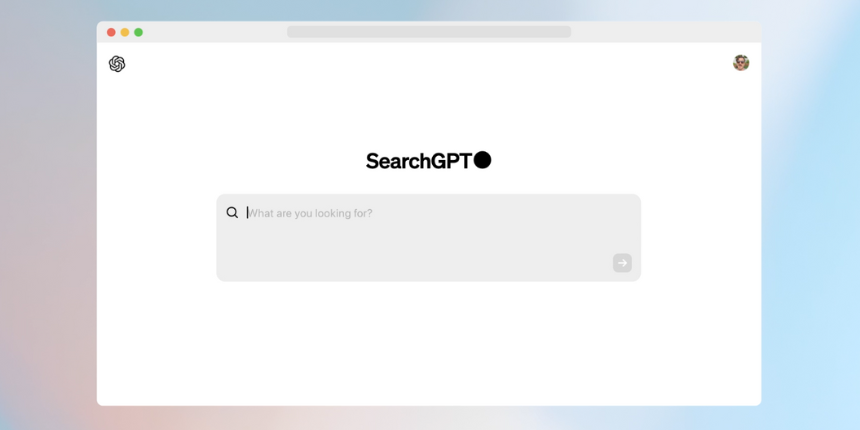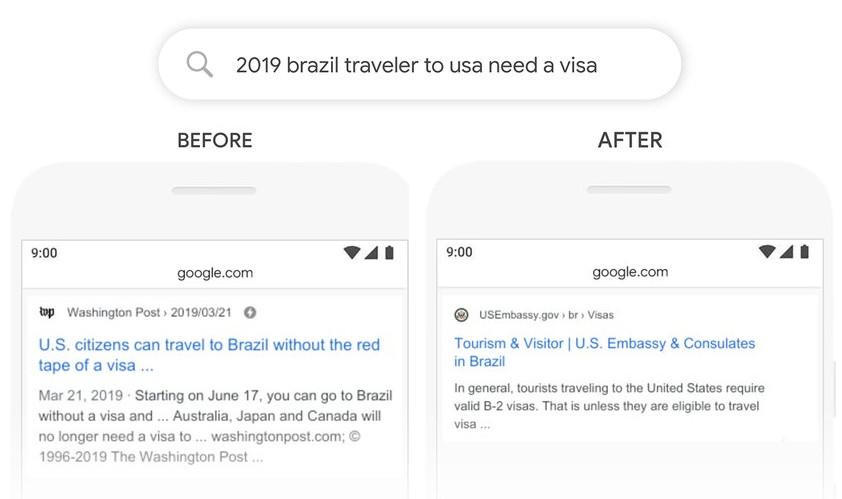
Navigate an unpredictable landscape with actionable, data-driven strategies tailored for your business from the brand down to the local level.

For all its myriad patents, products, services, and initiatives, Google’s goal is neatly summed up in a concise mission statement: to organise the world’s information and make it universally accessible and useful.
The search giant’s latest venture—an AI endeavour named BERT—encapsulates this effort perfectly, representing the next logical step in Google’s attempts to interpret exactly what users are looking for. But how will it work? And will there be any practical implications for marketers?
To provide users with the best possible results, Google has always invested heavily in its ability to understand the true meaning behind search queries.
On the surface, we have seen this manifested in the form of quick-fix rich snippets in SERPs. Answer Boxes, for instance, instantly satisfy short queries.

Definition-type searches also usually serve up an Answer Box. Most “how to” queries are answered with video results, while searches comprising “comparisons”, “best of”, and “top 10” are regularly addressed by easy-to-digest charts and tables.

Google’s desire to best answer user queries can be seen in many of its patents and updates. We’ve seen the importance of user signals grow steadily over the past five years, culminating in the March 2019 Core Algorithm Update earlier this year.
Google has also long attempted to better understand human language itself, evolving from Latent Semantic Indexing (now pretty much debunked) through to machine learning and their Natural Language API. The latest chapter in this story is their recent BERT update, which is currently being tested in North America—as we touched upon in our October LPM Roundup—and is expected to roll out continuously in the foreseeable future.
Although the meaning behind the acronym is rather dry (Bidirectional Encoder Representations from Transformers), BERT might just be Google’s most pioneering attempt yet to understand conversational language.
It places a special emphasis on important-but-often-ambiguous prepositions such as “from” and “to”; words that form the common building blocks of language but are notoriously difficult for computers to understand.

In Google’s official example above, the query is slightly ambiguous—even for humans—but it is clear enough that the searcher is trying to research the requirements for a Brazilian travelling to the US. The second SERP (after BERT came into effect) has extrapolated this essential intent and served up a much more useful, practical, and relevant result.
According to Google, BERT is the beginning of an ongoing attempt to rid the net of “keywordese”, the unnatural way that users currently search. Their aim is to gradually replace the common preference for using arbitrary strings of words…

..with queries that are more conversational and nuanced.

These efforts to understand colloquial language are likely tied to the anticipated widespread integration of digital voice. As we covered in our free voice search white paper, the growing anthropomorphisation of digital assistants is increasing the need for these interfaces to understand casual questions. Users increasingly expect context-sensitive answers to their informal questions and requests.
Subscribe to our monthly newsletter.
The short answer is yes. BERT has already been described as the “farthest-reaching update since RankBrain“. In Google’s own words, it could be “one of the biggest leaps forward in the history of search”, affecting 10% of all English language searches initially before being expanded to other languages on an as-yet-undetermined timescale.
Of course, Google has also sought to allay fears. As Google Public Search Liaison Danny Sullivan put it, “BERT doesn’t change the fundamentals of what we’ve long said: write content for users.”
Nevertheless, there are a number of practical points to observe and apply to long-term online strategies, particularly in relation to marketing-focused content and Search Engine Optimisation.
Research into the two-tiered SERP landscape suggests that traditional ranking metrics, such as linking domains and even technical streamlining, will only allow your content to rank so highly. To reach those invaluable top three spots, your content will have to be fashioned for your audience even more accurately—and you will have to completely satisfy user intent.
With the growing penetration of rich results into SERPs, it will be vital to intelligently select how you visualise and serve up your content (video, chart, Q&As). For this reason, audience research and data science will remain integral aspects of every strategist’s skill set.
Staying true to topics and creating more niche content (rather than focusing on fewer long-form pieces) is also likely to see you win. As BERT’s effects become more widespread, relevance will begin to outweigh authority in regard to long-term content visibility. Do this well and your online real estate is likely to see a rise in actively engaged and relevant traffic, as well as a welcome decrease in irrelevant traffic.
BERT should allow marketers more freedom in usage of language, which should lead to a gradual decrease in clunky jargon and dry industry-speak. Subsequently, writers will be able to mould their own styles to better connect with their audiences. In time, this should make the web a more diverse and interesting place.
Need to prepare your brand for the future of search? Want to make sure BERT becomes your ally, not your adversary? Our search-savvy strategists are ready to help.
Navigate an unpredictable landscape with actionable, data-driven strategies tailored for your business from the brand down to the local level.
Navigate an unpredictable landscape with actionable, data-driven strategies tailored for your business from the brand down to the local level.
Navigate an unpredictable landscape with actionable, data-driven strategies tailored for your business from the brand down to the local level.
Subscribe to our monthly newsletter.